HMS Queen Elizabeth has returned home to Portsmouth for the first time as a “fully-trained aircraft carrier”, say the Royal Navy.
HMS Queen Elizabeth cleared her penultimate hurdle for front-line duties after ten hugely-demanding weeks around the UK, preparing for her maiden deployment in the new year.
“A final package of training in the autumn – working alongside NATO and US allies – will confirm her ability to act as a task group flagship, so that she can lead a potent carrier strike force on front-line operations anywhere in the world.”
The Royal Navy say that in view of the size and complexity of the carrier, she received a dedicated training package, initially off the south coast, to test the ability of all 1,100 men and women on board to deal with everything they might expect to face in peace and war. The training package reached its climax with 18 fictional fire and flood incidents raging simultaneously – with the ship expected to continue flying operations while damage control teams toiled in the carrier’s depths.
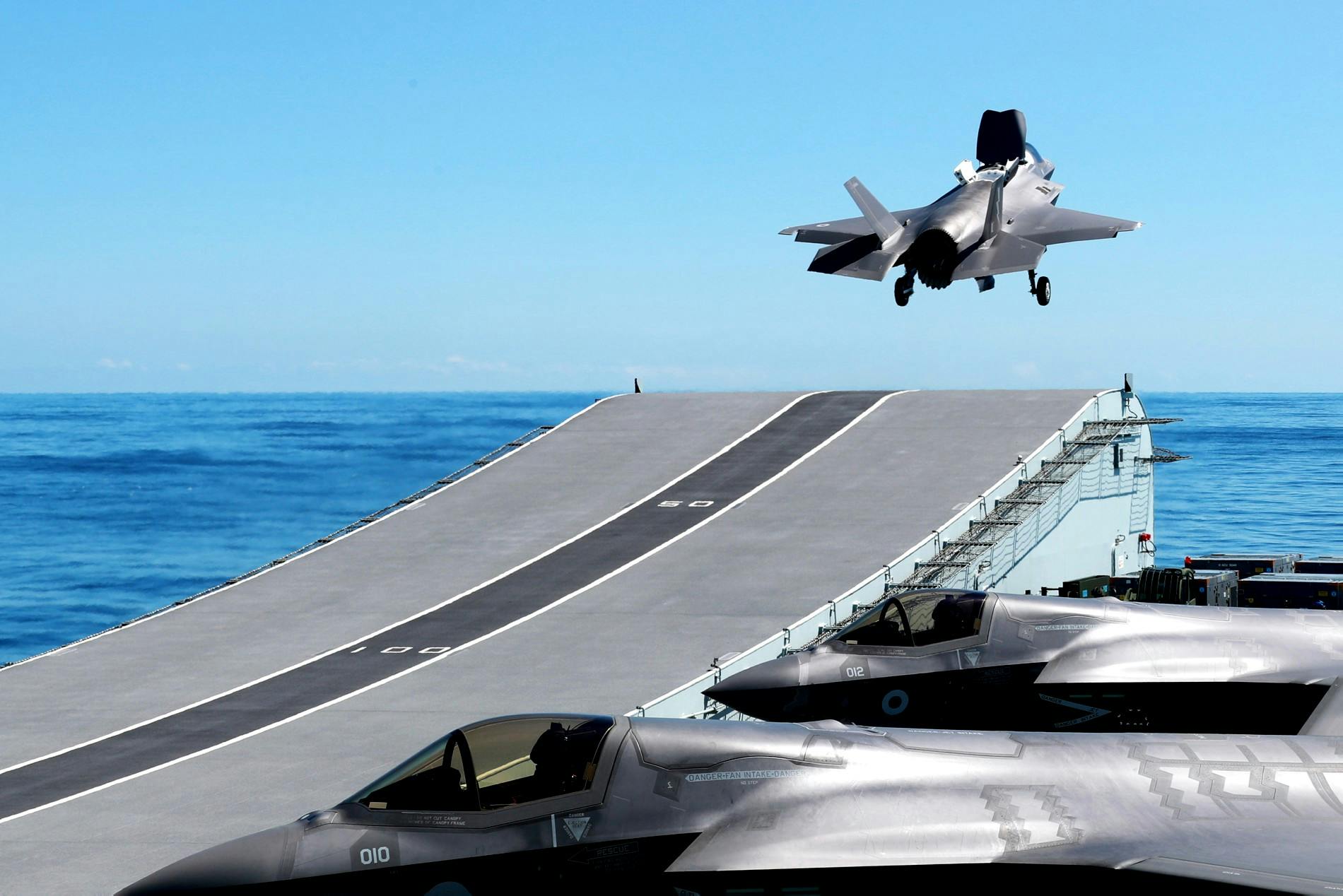
Minister for the Armed Forces James Heappey said:
“HMS Queen Elizabeth is an extraordinary ship crewed by extraordinary people from both the Royal Navy and the Royal Air Force. They deployed at the height of the COVID-19 outbreak and have remained at sea for over 10 weeks so that they could complete their operational training with the minimal risk of infection.
They’ve put their duty to our country ahead of spending time with their families during the pandemic and in the process, they’ve taken us a step closer to, once again, having a carrier strike capability with the capacity to project British influence across the globe.”
The Royal Navy say that HMS Queen Elizabeth will now enjoy planned maintenance in Portsmouth before task group training later in the year, which will also see the ship work with two F-35 squadrons for the first time. You can read more on this from the Royal Navy here.


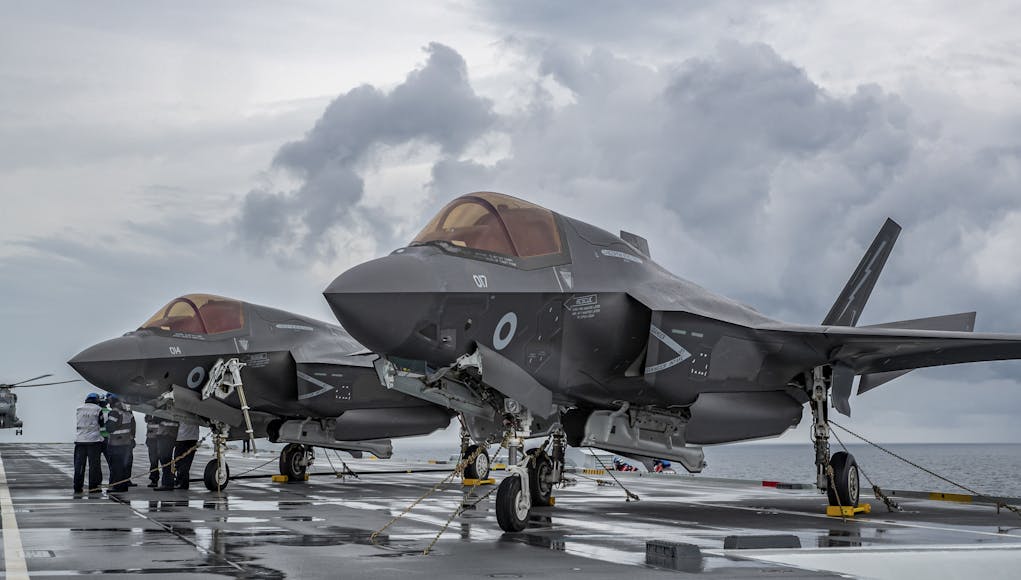


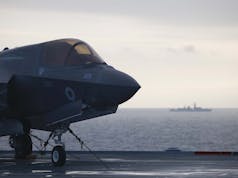
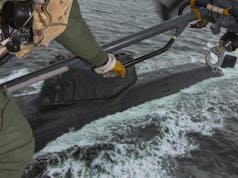

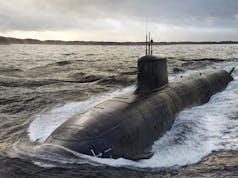


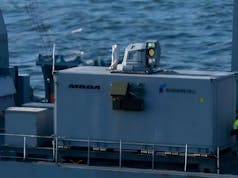


Absolutely. Surely procedures on a crowded deck and hangar must be a whole different ball game vs working in very sparsely populated conditions? That’s why I don’t throw up my hands in the same horror as some do when discussing embarking USMC squadrons because if that allows us to work up crowded deck/hangar procedures much earlier than we otherwise would have been able to due to having to wait for sufficient RAF planes to be available then that is a huge plus in my eyes.
Well done to the crew and those involved, does that mean the ship and aircraft combination are at the IOC stage?
The next question would be about next years World Tour. If the ship has the embarked USMC F35s, I take it the USN will include at least an AB and perhaps a supply ship as well. Would their supply ship be able to RAS with the carrier?
Yes, they UNREP with the USN’s carriers and large assault ships all the time.
https://www.navy.mil/management/photodb/webphoto/web_200623-N-KO533-1496.JPG
Cheers!
That wasn’t the question.
?
To which the answer is yes. They have practiced taking on stores and fuel from US support ships in the previous two WestLant deployments
Thank you Iain,
That’s what I was trying to say. Our respective navy’s replenishment ships are fully interoperable with any NATO warship regarding UNREP. A NATO carrier is a NATO carrier…
https://www.navy.mil/management/photodb/webphoto/web_170808-N-KB401-544.JPG
Cheers
Awesome, cheers guys. I had my suspicions they could. Perhaps if a US Navy ship was assigned as part of next years task group, it may get us out of the cack if there’s a problem with the Fort.
Ref your other question, the recent NAO report states Lightning II and Carrier Strike IOC as December 2020, with Crowsnest IOC September, 2021. I presume that might require operating a full squadron of 12 aircraft from the carrier, along with the Autumn inter-operational training requirements. I haven’t seen mention of any other formal IOC as an interim subset/step-along-the-way, which I guess is what you may be asking.
The deck crews are highly trained aircraft handlers, they are trained to operate its large numbers of aircraft on deck. They have many standard operating procedures in place, and the correct number of deck crews to operate a full airwing when they need too. they can go from 8 aircraft to 30, know problem all.
I am sure some of them did part of their training with the USN?
They did. We had decks crews deployed on Nimitz class and Wasp class carriers, and the Charles de gaulle. And we have our own mock up deck down at RNAS Culdrose, and some pretty advanced simulations.
Royal Naval School of Flight Deck Operations. Fancy seeing Royal Navy aircrew operating Sea Harriers in 2020?
https://m.facebook.com/rnasculdrose/videos/2997723806989297/
And they have some Sea Harriers which can still run their engines and taxi, so the deck crews have some first hand experience of noise, jet blast etc.
Yeah And we still have harriers down culdrose for them to practice with, I hope we keep them RN harriers and put them either onboard a large museum ship! Oh yeah we scrapped them all! Couldn’t old harriers be made into a crowsnest platform?
No, the Harriers at Culdrose are for ground taxi only, and are no longer air worthy.
If you want fixed wing crowsnest platform just use F35 with its radar and sensor fusion it’s ideal.
CVF F35 combo has way more options than CVS FA2 ever had.
But you would need more then 1 F-35 in the air at a time, each pointing in a different direction to get a 360 degree view of the airspace?
It is likely that a F-35 radar has a 120 degree angle of view, so you would need 3 F-35s in air pointing 120 degrees away from each other to get a 360 degree of view of the airspace.
Thanks for info gentlemen
Considering the statement that not all the existing jets would get upgraded to batch 4 spec, what missiles/bombs can the current jets utilise?
ASRAAM/AMRAAM and paveway 4. both internal and under the wing’s.
I presume block 4 would see the final integration of Meteor and SPEAR?
Yes, I think that’s the plan. ?
That’s my understanding too.
If I understand correctly, we would also theoretically be able to utilise LRASM and JSM as the software required would be on our aircraft as well. We’d just have to have the weapons and (maybe) train the pilots to use them, although I expect the engagement process is more dictated by the aircraft interface than the weapon.
According to Lockheed Martin, the Block 4 upgrade incorporates 53 upgrades of which 80% is new software, whilst the remaining 20% is hardware.
In advance of Block 4, most existing F-35s are getting new hardware, including new cockpit displays, more system memory, and faster processors, in a package called Technology Refresh 3.
New weapons Block 4 will support:
1. The Stormbreaker smart glide bomb (formerly known as Small Diameter Bomb II).
2. The UK’s ASRAAM and Meteor missiles.
3. Turkey and Lockheed Martin’s Standoff Missile (SOM-J).
4. The Kongsberg/Raytheon Joint Strike Missile, a new missile capable of land attack and anti-ship missions.
5. The Lockheed Martin LRASM.
Note. Now that Turkey have been booted out of the program. not sure if the SOM-J will still be included.
The F-35 will receive 11 radar and electro-optical updates and 13 electronic warfare updates, allowing the jet to detect enemies sooner and jam them.
Pilot disorientation is a serious issue in modern combat aircraft. Earlier this year, a F-35 was lost after Major Akinori Hosomi, an experienced pilot with the Japan Air Self Defense Force, lost situational awareness and flew his aircraft into the Pacific Ocean. GCAS will use the aircraft’s onboard sensors to detect when the aircraft is on a dangerous path to crashing. The system will warn the pilot and, if the warnings aren’t heeded, will actually take control of the aircraft and place it on a safe flight path. GCAS would have saved the pilot and aircraft in the April 2019 incident.
The F-35’s range has come into criticism in recent years, as the U.S. fighter fleet faces the prospect of long-range combat against other major powers. Block 4 would add an additional 600 gallons of fuel carried in external fuel tanks. That isn’t ideal, as even minor changes to the external appearance of the F-35 will compromise the airplane’s carefully crafted anti-radar profile, but short of magically finding room inside the plane for more fuel, it’s pretty much the quickest solution to the range problem. They haven’t mentioned anything about the conformal fuel tanks being developed with Israel.
The UK F35Bs in the States do not have plumbing in the wings for fuel lines to the hardpoints, the newer ones do. Theoretically it could be added, but would mean de-skinning the wings for access.
Other upgrades include an increased ability to help shoot down ballistic missiles, probably including using the Distributed Aperture System of infrared cameras to detect the heat plume of a missile taking off. The F-35 will also get open architecture improvements, likely to help speed the integration with naval/ground units and unmanned teaming.
Finally, Block 4 will apparently include classified improvements from Lockheed Martin’s “Skunk Works”. Exactly what those improvements are remains classified, but could include a new RAM coating.
The same thought occurred to me. But perhaps we need to look at it as “sorties generated” rather than “aircraft carried”. Either way, looks like they step up the training later in the year with a proper complement of aircraft. I of course assume one of the squadrons will be the USMC squadron assigned in 2021? Later this year though, we may have 18 production F35s delivered and if we used all of them, we could claim 2 squadrons across 617/207
Hi Julian,
There is a great article on STRN and yes the USMC will join the QE later this year.
See the last para of the article.
https://www.savetheroyalnavy.org/from-procedural-to-operational-carrier-strike-group-exercise-crimson-ocean/
Cheers CR
does anyone know the plans for PoW this year – all the action seems to be had by QE
Isn’t it just a mirror of QE but a year or so behind.
I have thought, and it’s an idle speculation, why are squadrons fixed at 12?
Why not offer a bit of flexibility with say squadrons of 8 grouped in “wings” of 3. 24 aircraft, but only say 16 planes under standard operational purposes. This would rotate the squadrons, and would allow rotation, rest training and upgrades.
Two full wings would be 48 planes. And 2 “part” wings would put 32 planes in the air at a fair lick on a hot assignment. Put a couple of spares or 3 (planes and pilots) in the mix … and a full compliment on board could be 50 to 54. The French carrier is a bit packed at 32!
The idea of a “wing” would bring flexibility, coherence and espree de corps to the unit. Strikes me it would be the same for RAF.
To me, 54 would be a plausible number for the fleet air arm with 27 for the RAF (with F35A’s). Plus 12 at the OTU. 93ish. Or a few more for larger RAF squadrons. And all planes can be land based if needs be.
Bearing in mind these carriers will be with us for 50 years… there are enough left to be replacements out of the 138.
A speculation, as I said.
The numbers of aircraft in a squadron vary and is not fixed the F35 is currently 8 I believe.There are rumours that the second FAA badged squadron will not now be formed and we we will have 1 bigger one with flights assigned from it as needed as a cost saving.
I doubt we will ever see 24 UK aircraft on a carrier unless its a wartime requirement , more likely to be 12 with the odd surge to 16 ,the current clowns in government are not carrier friendly.
The question is when is there ever going to be more an 24? The French one rarely has more than 24 and 36 means it’s full.
My point is at with 8 in a “squadron” it offers a coherent organised way to be flexible. And as I say, these planes can be land based if needed.
Even if only 1 carrier is on operations at a time. the planes and pilots need down time, hence pointing out having 2 “wings”.
What do you mean ‘even if’ only one carrier is operated at a time?? How can two possibly operate simaltaneously?The French btw, never sail with less than 24 and have carried their full complement previously. The QE class despite grand talk will likely never have two British squadrons i e. 24 jets embarked. Sailing these huge monoliths with 12 frontline (British) jets is likely their realistic future. For the investment made in the carriers and the F35b variant this is a wholly unsatisfactory return. We have more than twice the number of trained pilots than available aircraft now. Let’s hope they don’t quit through boredom as we wait for a second, or even a third squadron to be stood up.
it didn’t carry any aircraft when it was recording…
…refitting
Trevor, that’s a pretty pedantic answer….
Well the intention of the UK is to have 2 carriers which can keep 1 ship viable for operations all the time. The French make a major compromise.
Plus, not hoping to be pedantic, the CdeG was laid down in 1989 and sailed on it first operation in 2001. A very long time. We British have been more efficient and have 2 bigger ships. And better aircraft. And the CdeG has had endless problems limiting it’s service.
So it’s fair to point out that numbers of planes is only 1 criterion.
Bill, if what you’re saying is true regarding CDG always sailing with at least 24 jets, how can they do that with a total fleet of 44 Rafale M when also you say will only able to routinely field 12 jets from a fleet of 48?
I disagree with Bill
During a normal, peacetime tour there might be only 12 on board, plus helicopters – so probably between 20-30 total aircraft – but any conflict scenario would see 24 F35s loaded onto the carrier.
If we’re up against a peer enemy then this is more likely 30-36, though this is brown-trousers time!
To be honest, the number of aircraft assigned to a squadron is pretty irrelevant , as they operate as a whole force concept. meaning aircraft move between sqns as they are needed for tasking and operations. it’s a bit like the RAF’s expeditionary force structure, for setting up a mini RAF base with everything they need for extended operations overseas.
This is all true. A plane is a plane as are its numbers after all.
I just make an idle speculation that putting smaller squadrons together as “wings” applies logic and coherency as well as flexibility. Currently we seem to send out sorties of no more than 4… but I may be getting that wrong.
The number will increase, by 2023 we will be able to deploy 24 British F35’s. but even that number in this day and age is pretty impressive. You would have to go back all the way to the 2003 gulf war, was the last time we deployed a single fast jet type in greater numbers then 24, think we sent 32 Tornado GR4’s to the gulf. And even a small number of F35’s is a serious capability.
We can only hope the top brass don’t get their wish to split buy the F35 between A/ B models.
A serious move towards the ‘A’ model in the late 2020’s, would mean an abandonment of Tempest project, probably cancelled before it goes any further.
Unfortunately, it’s increasingly likely. Such a decision will degrade and limit Carrier Strike for the first 30 years of their lives.
Persistent rumours of abandoning the QE class Royal Marines embarkation modifications, also make grim reading for the future of the Royal Marines.
I wouldn’t be surprised to see the Marines reduced to 4,000 in total (along with axing Albion and Bulwark) and abandoning the ability to deploy anything above a single Commando of 650 men. Perhaps anything above Company level…. i.e a pure raiding force.
Fully funded carrier strike means current and future capabilities Will need to be curtailed/ withdrawn or cancelled outright.
Post Covid19, without an uplift in defence spending, we are heading for a perfect storm in defence.
Dreadnought is about to seriously drain the defence budget and will do for many years to come and it’s only just starting to dawn on the upper echelons in Whitehall, that operating and maintaining effective Carrier Strike Capability, is a ‘seriously expensive’ undertaking.
Sorry to be so pessimistic guys, but effective Carrier Strike can only be accomplished by sacrificing other capabilities, within the current 2% straight jacket.
It’s 2.1% currently.
France it’s 1.8%. France has missile subs, marines and aircraft carrier.
To be fair we have better planes, thanks to the F35.
And PS, Tempest is a replacement for Typhoon.
Hi Trevor,
France (rightly or wrongly) tends to go for cheaper options all round.
They have a carrier, yes, but, availability is not great, with predictable periods of being unavailable due to refits, refueling etc.
This makes the French Carrier of dubious value.
I’ll give you a copper bottomed guarantee Trevor, if the RAF get the F35A, there won’t be a Tempest, it will be quietly disposed of and disappear into the mist.
I would sumise that some elements within the RAF, see the Tempest as a potential massive money eating monster, that will drain resources away and invariably be 10 years late.
They would probably be very happy getting a steady flow of perfectly F35A’s, straight off the shelf. Folks at the sharp end couldn’t give a rats arse were the equipment comes from, they just want quality equipment, delivered on time and on budget.
The UK has caviar tastes, on a birdseye fish cake budget, we simply cannot make ends meet….
Dreadnought will absolutely screw the pooch, as our American cousin’s say…
Depressing isn’t it!
Tempest is a long way away and the F35 has already had a long gestation period.
Typhoon will need replacing and the the question is what is needed in respect of a air superiority plane?
Don’t get me wrong Trevor, I’m all for team Tempest, but, I’ve been around long enough and watched the fools errand of haphazard UK procurement for decades, I have a good nose for were we are going!
Tempest will be needed from 2035 ‘ish’, the F35 will like the F16 be in production for decades ahead, in increasingly capable forms.
LM will be offering a very capable block 6 or 7 by then that will probably be ‘good enough’ and offered at half the cost of Tempest.
It’s just very hard to see how Tempest can possibly be funded against an extremely tight development schedule to reach service by the early 2030’s
It will have to be off the blocks with serious investment spent, very shortly and the bank is empty…..
France’s spending will increase with the new subs and new state of the art frigates. Incidentally, have you seen the defensive suite on the CDG? Still we have phalanx and gimpys as a last line of defence.
True Bill, but they keep the displacement and sophistication of their
ships and subs down in general, it keeps a lid on spending, though France has an armed forces with a somewhat patchy capability, due to cost cutting and limiting equipment fit.
I suppose we are dipping our toe into the same water with T31, at least we have a platform big enough to up arm, if and when we can afford it.
CDG is certainly well protected, with the limited number of escorts the Royal Navy has, I would like to see the QE class fitted with Sea Ceptor launches and Martlet packed on the gun systems.
The soft launch would certainly be less of an issue than solid fuel rocket blast roaring across the fight deck!
The Italians small carrier even has 32 Aster 15 and 2 76mm guns by the look of it!
RAF top brass haven’t said that, what a handful of officers may say doesn’t reflect the whole RAF. Any A-model variants would only come if defence spending increased to the point where additional units could be ordered.
To be honest, even if the Chancellor did throw a few extra billion at the RAF for additional F35s it would make more sense to still use the F35B; say we got all 138 in our inventory all together in service (fantasy I know, but for the sake of argument) we could stand up a 5th and 6th squadron from that, so 3 RAF and 3 RN. makes more sense to have then all as B; they’re all carrier capable and they can save costs by having a single OCU and common spare parts.
Range could be extended by conformal fuel tanks, when taking off from conventional runways.
I’d only buy the A variant for the RAF if we had a significant increase in budget and could field 7-8 squadrons.
Steve, I completely agree with you, just saying what I think will actually happen, as opposed to what I wish would happen.
The RAF will probably end up with the F35A and no Tempest, it’s just the inevitable direction of travel I think.
12 is more than enough. Stop wanting something that won’t happen. 12 is World.Beating.
We don’t need anymore than that. It is probably the most fantastic capability outside the USN.
That is very true.
Fully trained? For four jets and three helicopters simultaneously? Ridiculous statement. It will never sail with 50+ aircraft which it can cope with, but even with 24 jets and maybe up to 8 other aircraft that is a hell of a different proposition unless we are planning for next years cruise with just 4 jets embarked!
Good discussion but it’s nearly always from the perspective of what can the UK do compared to say France or operating alone and being vastly outnumbered. Whereas our defence posture is a collective one through NATO. So if we’re taking on any peer threats it will be carrier groups, with contributions from most members. Surely the deployed airwing from all participants would be far in excess of 24 in a scenario where 12 UK f35s were not sufficient.
Aside from the USMC, which other of our likely allies have F35B? In Europe, are Italy and Spain getting any?
Further afield, Japan and Australia are the only other users of the B, aren’t they?
Sorry, I meant in any scenario where 24 f35 is not enough…say if Russia turns up the heat on the Baltics and northern Scandinavia, I would have thought our CBG airwing would go up to 36 with usmc, the Charles DG and probably a US carrier would all surge together, with lots of escorts and subs from European countries. Ditto if the heat is in the med or black sea but with the Spanish and Italian light carriers too. So when the peer threat takes priority the air wing would be a nato airwing across multiple carriers of around a hundred aircraft, not 24. For any routine cruising or non peer threats 12-24 would be sufficient.
Makes sense
Incidentally, I was wrong about Aus, but Korea and Singapore both have F35Bs along with Japan. I’d say it makes sense to have much cross decking when the QE is out in the Far East on deployment 🙂
Italy has bought (15 so far) F35Bs primarily for their new Trieste LHD carrier and the older Cavour. Although the Canberras of the Australian Navy have the ski jump, the deck does not have the thermal coating for the F35Bs. There are also rumours that the deck can’t take the weight. To that end Australia won’t be purchasing the F35B in the short term. Spain has for the time being cancelled the plans to replace its Harriers with F35Bs, which are having their lives extended to 2030. Japan, will be the only other carrier Nation with F35Bs. Although it looks like South Korea may also be looking to join the club.
I have a feeling it was critical that this deployment went well ahead of the forthcoming Defence review. Can you imagine how the dice would have been loaded by a foul-up? Well done to all involved I would say.
On the defense review: I hope we don’t end-up with a fudge. We ideally need a credible ability to operate 2 decks simultaneously – albeit perhaps with slightly different airgroups – as the idea of having a vessel like QE or POW effectively as a spare is ridiculous. If this is unaffordable, I’d sooner end-up with a French style solution of a strike carrier and a class of mistral-type vessels – to which we can deploy choppers and F35s in useful numbers for everything apart from a major war. What what little I’ve read, this would also be in line with recent thinking from the USMC on moving away from large vessels to more distributed ops.
What do you mean by ‘spare’? Having one ship available at all times necessitates having at least two.
You seem to have missed the point. I’m saying if we end up with 2 ships but only end up with money for enough people and planes for 1, then the second hull is underutilised. Having built 2 of them, I hope we can operate 2 some of the time. If we can’t it may be time to think again.